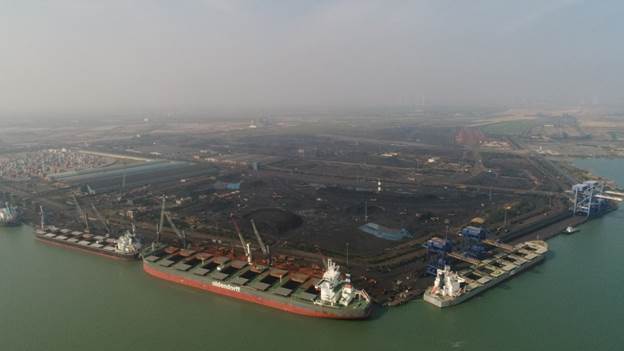Promoting Rail-Sea-Rail Transportation for Efficient Movement of Domestic Coal
In an effort to integrate Rail-Sea-Rail (RSR) transportation for the effective movement of domestic coal, the Ministry of Coal has taken the initiative to promote Rail-Sea-Rail. The seamless movement of coal from mines to ports and then to end customers is made possible by this multimodal transportation system, which lowers transportation costs and boosts logistical effectiveness.
About 75% of the entire domestic raw coal despatch for the fiscal year FY'23 was made up of major coal-producing states including Odisha, Chhattisgarh, Jharkhand, and portions of Madhya Pradesh. The Ministry of Coal has forecast that coal production in India will nearly double with a CAGR of 7.7% by FY'30, recognising the necessity for increasing coal production.
A well-planned and effective coal evacuation system is needed to accommodate the rising demand. In order to create a long-term plan for the nation's coal transportation, the Ministry of Coal established an Inter-Ministerial Committee (IMC) led by AS, Coal and composed of the Ministries of Power, Railways, and Ports, Shipping, and Waterways. Approximately 55% of coal is currently evacuated by railroads, and by FY'30, it is intended to expand this percentage to 75%. The Ministry of Coal has made it a priority to increase coal evacuation and improve alternate routes, like RS/RSR mode, by FY'30 in order to reduce congestion.
The committee has made a number of recommendations to encourage RSR coal evacuation to increase from its current level of 40MT to 112MT by 2030. This tactic has numerous advantages. Firstly, by offering a second alternative route of coal evacuation, it is projected to lessen congestion on the All-Rail Route. Additionally, by developing infrastructure that may be used for exports in the future, it opens up new export potential. Finally, RSR has a substantially smaller carbon impact than ARR.
The logistics sector in India could undergo a revolution thanks to the inexpensive and environmentally beneficial coastal shipping form of transportation. The goal of current initiatives to increase coal evacuation, such RS/RSR, is to utilise the ports along the Southern and Western coasts to their fullest potential. This will make it possible to deliver additional coal to power plants in Gujarat, Maharashtra, Karnataka, Goa, Tamil Nadu, Kerala, and Andhra Pradesh in an effective manner.
Efforts are being made to reduce the price of shipping coal through RSR. For end customers in Southern India, choosing rail-sea-rail could potentially result in logistics cost savings of between Rs. 760 and Rs. 1300 per tonne. Currently, the overall price for coal supply from MCL (Paradip) to Western/Northern TPPs rises by about Rs 2500/ton over ARR, although it is still less expensive than the total landed price of imported coal.
The Ministry of Coal's efforts to promote Rail-Sea-Rail are having a big impact because the amount of coal transported via Rail-Sea-Rail has increased significantly by about 125% over the last four years. A continuous and uninterrupted power supply is ensured by the effective coal evacuation to consumption hubs in India, which is made possible by the Rail Sea Rail as an alternate means of transportation, which is predicted to roughly treble in India's coal production over the next seven years.
The recommendations from the IMC are a component of the "Whole of Government" strategy to solve the issues with effective coal evacuation to the destinations by all Ministries.
To continually fulfil the nation's rising energy needs and provide a reliable and effective energy supply system, the Ministry of Coal is taking all necessary steps to improve the Rail-Sea-Rail Coal Evacuation strategy.


